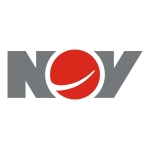Mag Silver Corp. [MAG-TSX, NYSE American] reported results from the final three holes (3,817 metres of 10,413 metres total) completed in surface-based phase 2 drilling on its Deer Trail carbonate replacement deposit (CRD) project in central Utah, United States.
The three widely separated (up to 2,100 m) holes reported here cut high-grade gold, copper-gold and silver-gold-copper-lead-zinc mineralization of distinctly different styles and relative metal abundances.
Combining these three new zones with the intervening Carissa zone discovery adds four new mineralization stages and at least three new mineralization pathways (spokes) to the Deer Trail system, continuing to validate the hub-and-spoke thesis. The distinctly different mineralization styles of the separate zones are hallmark indicators of a significant, long-lived, multistage CRD, potentially sourced from a productive porphyry copper-molybdenum intrusive centre. The combined results provide strong support for phase 3 drilling, currently under way to seek that porphyry centre.
DT22-11: 400 metres north of Carissa discovery cut a 23.5-metre zone of multiple stacked semi-massive sulphide mantos, the best of which grades 150 g/t silver, 1.1 g/t gold, 0.8% copper, 4.9% lead and 4.1% zinc over 5.0 metres.
DT22-12: 800 metres northwest of Carissa cut 33.0 metres grading 0.6 g/t gold encompassing four high-grade gold zones the best of which ran 6.1 g/t gold over 1.5 metres.
DT22-13: 1.7 km southeast of the Carissa cut six strong copper-gold bearing structures, the best of which graded 2.2 g/t gold and 2.1% copper over 4.2 metres.
“So far, every hole we’ve drilled within a 1.5 km by three km corridor has hit varying styles of gold, copper and silver-lead-zinc mineralization within a thick package of intensely altered reactive carbonate rocks. These are all hallmark features of a large skarn/CRD system and combine to point towards Deer Trail Mountain, where we are currently drilling, as the likely source,” said George Paspalas, president and CEO. “With the Juanicipio mine now in commercial production and quickly ramping up; these continued exploration successes and ongoing drill programs should mean an exciting balance of 2023 and 2024 for Mag and its shareholders.”
Mag has started phase 3 drilling of up to three holes targeting porphyry hub targets interpreted to underlie Deer Trail Mountain and Mt. Brigham where the source of the manto, skarn and epithermal mineralization and extensive alteration that characterize the project area is interpreted to lie.
The silver-rich Deer Trail carbonate replacement deposit project in Piute county, Utah, includes both patented and unpatented claims (approximately 7,250 Ha) in the historic Deer Trail mine and the adjoining Alunite Ridge area. The property lies directly on the Tushar strand of the Wasatch-Tushar fault, the major 100 km wide structural zone separating the Great basin from the Colorado Plateau. Farther north, this same fault system hosts the Tintic and Bingham Canyon CRD-skarn-porphyry districts. Age dates from all three systems fall around 28 million to 35 million annum, suggesting metallogenic affinity.
Mag has consolidated the Deer Trail properties for the first time since the early 1980s, allowing application of an integrated district-scale exploration approach based on the CRD through skarn to porphyry copper-molybdenum continuum of mineralization styles shown by many related systems worldwide.
Mag Silver is a growth-oriented Canadian exploration company focused on advancing high-grade, district-scale precious metals projects in the Americas. Mag is emerging as a top-tier primary silver mining company through its 44% joint venture interest in the 4,000-tonne-per-day Juanicipio mine, operated by Fresnillo PLC (56%).
Mag is also executing multiphase exploration programs at the Deer Trail 100% earn-in project in Utah and the 100%-owned Larder project, located in the historically prolific Abitibi region of Canada.




